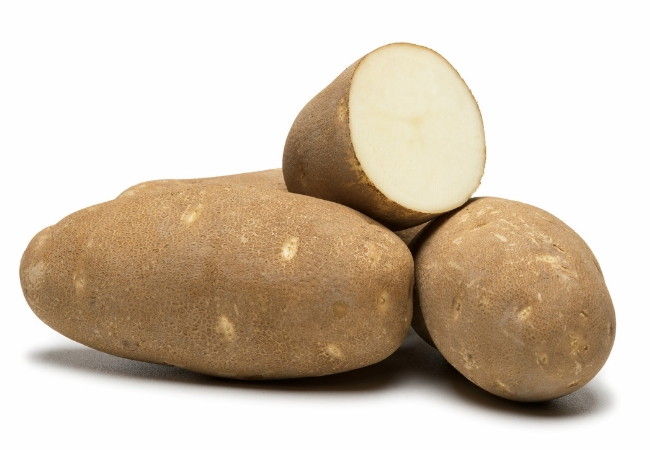
Cultivar Corner: Pomerelle Russet shows greater resistance to some diseases than russet counterparts
Pomerelle Russet
Parentage: A97201-4 x A97299-1
Developer: Northwest Potato Variety Development Program (www.pvmi.org)
Plant variety protection: Applied for in 2016.
Strengths: Fresh market standout, high U.S. No. 1 yield, attractive, smooth tubers, few tuber defects, moderate specific gravity, early full emergence, excellent culinary quality, processes well from short-term storage.
Morphological Characteristics
Plant: Semi-erect, small to medium vine that matures relatively early in the season.
Tubers: Oblong-long tubers with brown-russet skin with eyes that are intermediate in depth, intermediate in number and are evenly distributed. Medium-Long dormancy approximately 30 days shorter than Russet Burbank.
Agronomic Characteristics
Maturity: Early season
Tubers: Pomerelle Russet produces tubers with moderate specific gravity, average total yields with a relatively high percentage of No. 1 tubers, and tubers less than 12 ounces. Pomerelle Russet can maintain acceptable fry color for about 180 to 200 days in storage at 48 degrees Fahrenheit, indicating some potential for processing out of short- to medium-term storage.
Yield potential: Medium
Specific gravity: Average for processing
Culinary quality: Excellent
Diseases/physiological disorders: Pomerelle Russet, Russet Burbank and Russet Norkotah are similar in their response to common scab, Verticillium wilt, foliar early blight, PLRV net necrosis and foliar late blight. However, Pomerelle has greater resistance to soft rot, corky ringspot and tuber infections from late blight than Russet Burbank and Russet Norkotah. Pomerelle Russet also has exhibited resistance to potato mop-top virus (PMTV).
Incentives for production: Pomerelle Russet is an early variety notable for its very attractive, smooth tubers and resistances to internal and external defects with a high percentage of U.S. No. 1 tubers. It has excellent culinary quality and lower total glycoalkaloid concentrations and higher protein and vitamin C concentrations than Ranger Russet and Russet Burbank.
Management
Fertility: Pomerelle Russet’s nutrient requirements are similar to Russet Burbank.
Planting: 9- to 11-inch seed piece spacing with rows spaced 34 to 36 inches apart.
Storage: Dormancy length is moderately long. At 42 degrees, dormancy break was 170 days after harvest (DAH), 125 DAH at 45 degrees, and 110 DAH at 48 degrees. In general, dormancy was ~ 30 days shorter than Russet Burbank. Pomerelle Russet had significantly lower susceptibility to fusarium dry rot than Russet Burbank.
Seed production and availability: Check www.pvmi.org for a full list of seed growers in the U.S. In Canada, seed production is governed under an exclusive agreement with Pommes de Terre Laurentiennes, Quebec (819-522-6111; [email protected]).
MORE FROM CULTIVAR CORNER: Castle Russets have excellent processing qualities.







